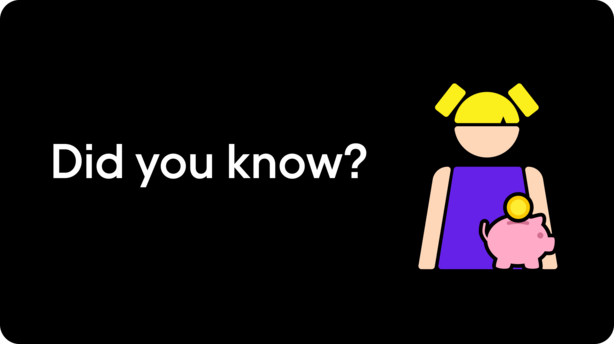Introduction to SA303 and Tax Reduction

Navigating the UK tax system can be complex, especially when you're looking to reduce your payments proactively. This is where the SA303 form becomes extremely useful. If you have overpaid your Income Tax, the SA303 form allows you to reduce your future tax payments, ensuring you aren't out of pocket unnecessarily. Understanding how to use this form effectively can significantly enhance your financial planning strategy.
The SA303 form is primarily used to request a reduction in your payments on account, which are meant to cover your anticipated tax liability for the following year. By accurately predicting your income and expenses, you can adjust your payments on account through this form, potentially freeing up vital cash flow for other uses. This article delves into the nitty-gritty details of the SA303, its benefits, and how you can utilise it effectively with the help of the Pie Tax App and Expert tax assistants available on the Pie app.
What is the SA303 Form?
The SA303 form is a request form used to reduce your payments on account for Income Tax. By filing this form, you can adjust your tax payments to better reflect your current income, which may have decreased since your last tax assessment.
This can be particularly useful for freeing up valuable cash flow, allowing you to reallocate funds to other pressing needs or investments. It's an essential tool for managing your finances more effectively during fluctuating income periods.


How Can It Benefit You?
By using the SA303 form, you can adjust your payments on account, ensuring you’re not overpaying on your taxes. This can provide you with financial flexibility, allowing you to better manage short-term cash needs and allocate funds more efficiently.
Whether you’re facing unexpected expenses or looking to invest in your business, reducing your tax payments through the SA303 can help you maintain a healthier cash flow, making it easier to navigate financial challenges.

According to HMRC, around 40% of self-employed taxpayers have utilised the SA303 form in the past year, thereby managing their cash flow more effectively.Recent SA303 Statistics

Recent data indicates that about 25% of small business owners use the SA303 form to adjust their payments on account, saving almost £1,200 per annum on average.Utilisation Rate

How to Fill Out the SA303 Form
Understanding how to fill out the SA303 form correctly is essential. First, ensure you have all the necessary details, including your National Insurance number, UTR (Unique Taxpayer Reference), and estimated tax bill for the year.
The form requires you to fill in sections related to your estimated income and tax reductions. Always double-check your figures to avoid errors. Submitting inaccuracies could result in HMRC rejecting your form, leading to delays or extra charges. Next, submit the completed form to HMRC.
While you can fill out the form manually and post it, using the Pie Tax App simplifies this process immensely. The app not only guides you through each step but also provides tips on making accurate estimations. Moreover, the Expert tax assistants available on the Pie app are there to answer any queries you may have.
When to Use the SA303 Form
Timing is crucial for the SA303 form. The best time to submit it is when you have a clear picture of your income for the year, usually around the end of the tax year but before the next payment on account is due.
This allows you to adjust your payments on account before they are debited, offering you immediate financial benefits. If your income has substantially decreased or if you've had significant expense deductions, it makes sense to file the form promptly.
Keep an eye on deadlines set by HMRC for submitting the form; usually, the latest you can submit it is 31 January following the tax year in question. This ensures that any approved reductions will apply to your next payment on account, giving you quicker financial relief.

Tips for Using the SA303 Form

Carefully verify your income estimates to avoid penalties and ensure accurate tax filings with HMRC.Verify Income Estimates

Keep an eye on deadlines for submitting the SA303 form to avoid late penalties and ensure timely tax adjustments.Monitor SA303 Deadlines

Use the Pie Tax App to streamline the process and reduce errors, making tax management easier and more efficient.Streamline with Pie Tax App

Fun Facts About UK Taxes
Did you know that the concept of Income Tax in the UK dates back to 1799? Introduced by Prime Minister William Pitt the Younger to fund the Napoleonic Wars, it was initially a temporary measure! Today, tax management is more sophisticated, offering various tools like the SA303 form to make life easier.
How to Handle the SA303 Form

Handling the SA303 form might seem daunting, but it doesn't have to be. To start, make sure you've collated all necessary documentation, including previous tax returns and current financial records. Accurate data is the cornerstone of a successful SA303 application. Use available resources like HMRC's guidance and the Pie Tax App to guide you through the process step-by-step, ensuring you don't miss any critical details.
In addition to documentation, expert advice can also be invaluable. The Expert tax assistants available on the Pie App can offer insights tailored to your specific circumstances. Whether you have questions on filling out the form or require advice on your estimated income, getting it right the first time saves you from potential rejections and complications down the line.

Ensure you have your National Insurance number, UTR (Unique Taxpayer Reference), and estimated tax figures readily available. Accurately record all financial data to avoid discrepancies and ensure a smooth tax filing process. Proper documentation helps in precise calculations and prevents potential issues with HMRC, ensuring compliance and efficient tax management.Documentation Required

Utilise the expert tax assistants available on the Pie app. Their professional advice can streamline the tax filing process, helping you avoid mistakes and ensuring accuracy. With their guidance, you can navigate complex tax issues more easily, making your experience smoother and more efficient while ensuring compliance with HMRC regulations.Seek Tax Expert Assistance
Summary
Understanding and using the SA303 form effectively can lead to significant financial benefits, primarily by freeing up your cash flow and reducing unnecessary tax payments. Start by gathering the necessary documentation and verifying your income estimates. The Pie Tax App and Expert tax assistants available on the Pie app offer tailored guides and expert advice to help you through each step of the process. Submitting accurate and timely SA303 forms can make a noticeable difference in your financial planning, making the entire process less daunting and more manageable.
Frequently Asked Questions
What is the SA303 form?
The SA303 form is used to request a reduction in payments on account for Income Tax. This helps taxpayers manage their cash flow better.
How can I benefit from using the SA303 form?
By accurately reducing your payments on account, you can free up cash flow and ensure you're not overpaying on your taxes.
How do I fill out the SA303 form?
You need your National Insurance number, UTR, and estimated tax bill. Fill out the necessary sections and submit it to HMRC. The Pie Tax App can simplify this process.
When should I submit the SA303 form?
Submit it when you have a clear picture of your annual income, usually towards the end of the tax year but before the next payment on account is due.
What documentation do I need for the SA303 form?
Ensure you have your National Insurance number, UTR, and estimated tax figures. Accurate data is crucial for a successful application.



